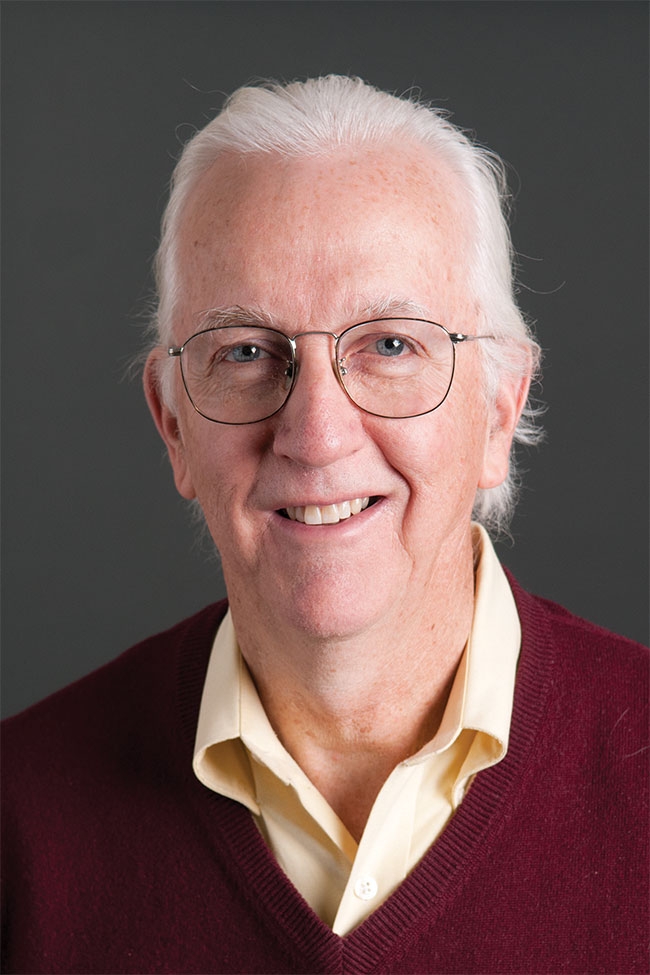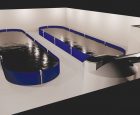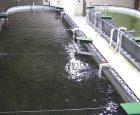
Features
Opinion
Recirc
In search of the right mix
Hello readers and I hope we all have great experiences in this new year 2019. I think some of these exciting experiences will be centered around recirculating aquaculture system (RAS) technology and farms.
April 11, 2019 By Michael Ben Timmons
 Hello readers and I hope we all have great experiences
Hello readers and I hope we all have great experiencesRAS is definitely seeing more usage and is becoming a central component to most of the new startups and expansions of aquaculture around the world. Simply put, the availability of sites with enough high quality water to support significant production are rare and basically non-existent. For the last 20 years, I’ve often heard that what the aquaculture industry needs, and in particular the RAS industry, is a ‘standardized’ design. Yes, it was argued, we just need this magical standard design and then we will see widespread adaptation of RAS. Humph. Hogwash. Fake news.
In my last column, I talked about how the American automobile industry had 485 companies competing in the market place with what they thought was the ‘best’ product or design. We all know that almost all of them did not survive, and it was the market that defined ‘best’. We are at a similar position today. There are multiple companies out there selling what they think is the ‘best’ design. All these designs address the same objective which is to provide a water environment that results in a product being produced profitably. As such, all these designs have common components, e.g., biofilters, solids removal, gas conditioning. But the designs employed to achieve this objective still have immense variability. For example, there still is no consensus on what the ‘best’ biofilter is or how the rearing vessels should be designed, e.g., raceways, round tanks, etc.
I have a confession: I think I have the answer. Note that all inventors always think they have just invented the next best mouse trap. Only time will tell and it will again be market forces that will make this determination. Having said that, let me also bring up a theory I have which I call, momentum of design (MOD). MOD is the fact that once a design has been accepted by industry, it is very difficult to depart from this design. For example, fish were originally raised in raceways and it took forever to move the industry to accept round tanks. Even after round tanks became the norm, industry was still trying to make raceways work and that mostly centered around the inability of raceways to self-clean.
Raceways were really great for other management features, e.g., ability to crowd and harvest fish, foot print efficiency, ease for people managing them. We tried all sorts of design modifications to make a raceway clean effectively, most notably the Burrows Raceway design. A Burrows raceway is basically a conventional raceway, but a center divider wall is inserted so that the tank flow travels in a plug flow direction down and back and around the center divider.
A recent article by Stockton et al. (2016) provides a good overall description of a Burrows raceway and compares it to a new design called the mixed cell raceway.
I have personally been designing, testing and building mixed cell raceways (MCRs) for the last several years. We first implemented one of the designs at a Native American facility in Maine. This MCR has been operational since 2012. More recently, a 700 ton/yr facility was implemented in China (same design team and supply team).
As we all know, academics love to study things and we did just that. Our research was published last year where we simulated using CFD analytics of various configurations and operating conditions to maximize the effectiveness of the MCR design. I can report that the China facility (operational for ~18 months) and the Maine facility have and are operating quite nicely.
Will the MCR design become the standardized design that we’ve all been hoping for or will one of the designs used in the other large-scale farms being built recently become the standard? Who knows?
I can say confidently that we are closer than ever to RAS designs that are going to allow RAS farms to supply the majority of our seafood in the future. And this brings me back to my earlier point of MOD (momentum of design).
The current industry based around net-pen design for salmon production has evolved into a mature industry over the last 40 years. All that previous capital investment creates a MOD that will not just go away. Only time and proven economic superiority in alternative designs will cause this change. But if I were a betting man, I would not be betting on net pens lasting for additional decades as the dominant form of large-scale production systems. RAS has too many advantages.
Maybe more on that in my next column. Comments are welcome, email me at mbt3@cornell.edu. And hey, if you or someone on your team needs to build up their expertise on RAS, my university is offering a newly created distance course, see www.eCornell.com/fish. The Aquacultural Engineering Society is also now offering certification in RAS design, see www.aesweb.org or contact me for details on this as well.
Happy fishing!
Michael Ben Timmons is a professor in the Department of Biological and Environmental Engineering at Cornell University in Ithaca, New York. He teaches information related to the production of aquaculture products with emphasis on sustainable and environmentally friendly engineering technologies. Email him at mbt3@cornell.edu.
Print this page








